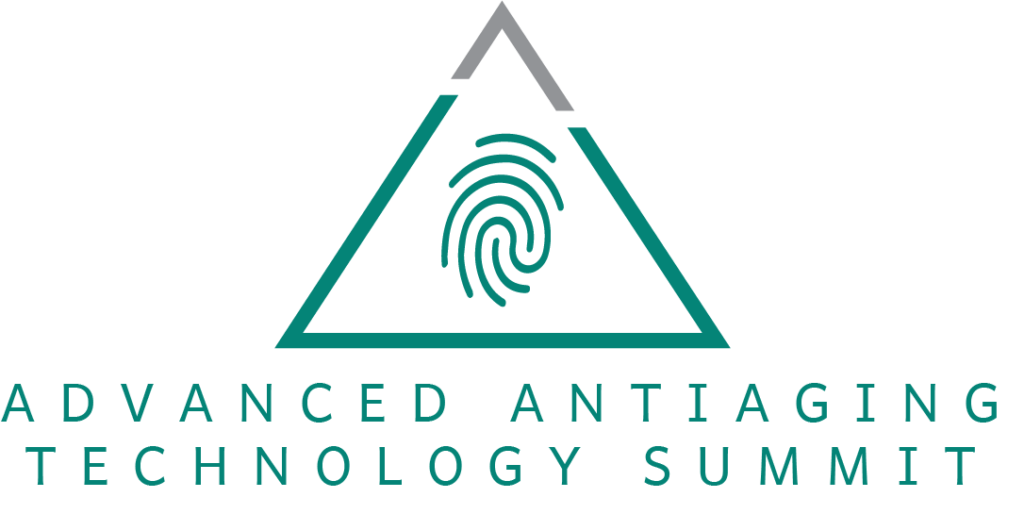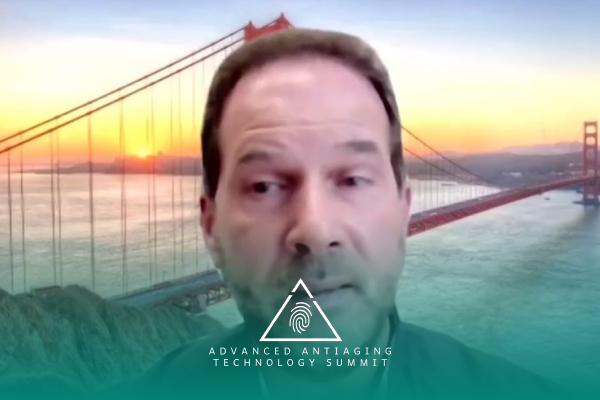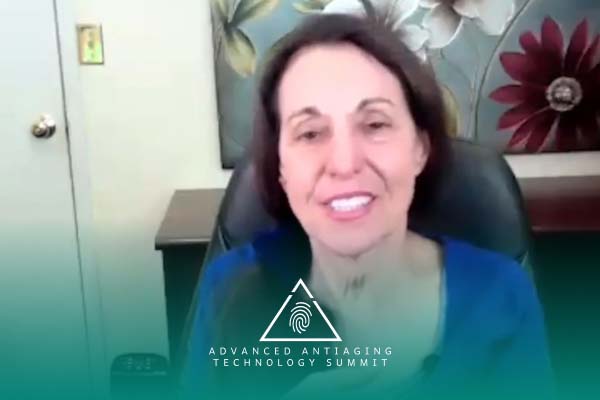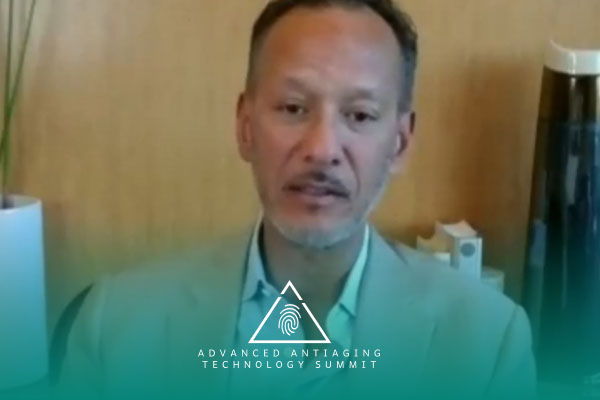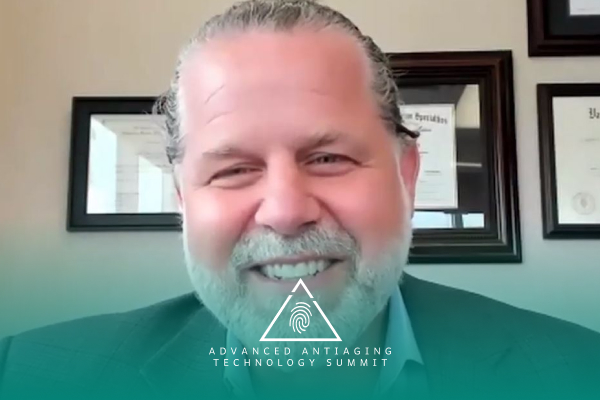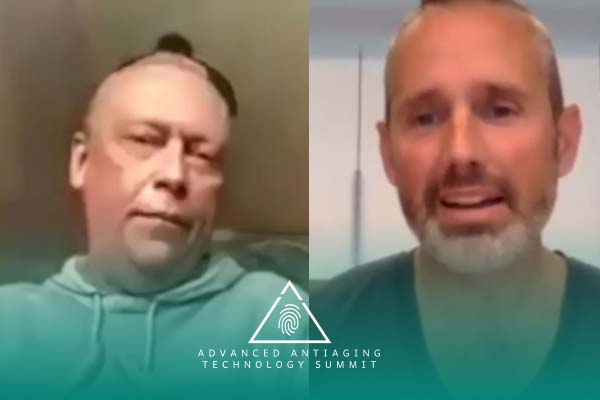Join the discussion below
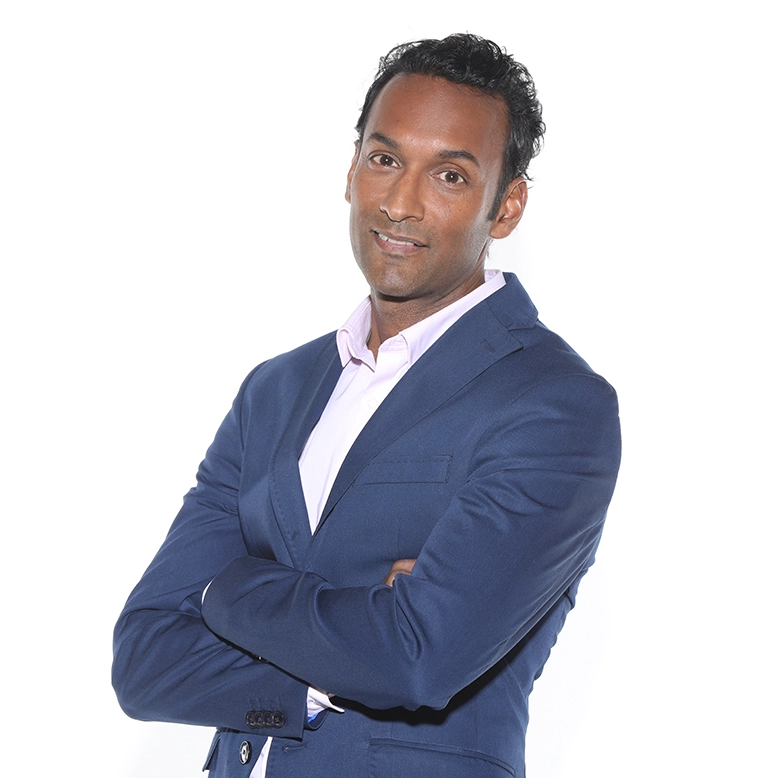
Dr. Goel is a medical physician and founder of Peak Human Labs. His mission is to speak knowledge of the latest cutting edge medical tools and science in order more people to live in a Peak mental, physical and spiritual state. You can learn more about his work at longevity.peakhuman.ca. Read More
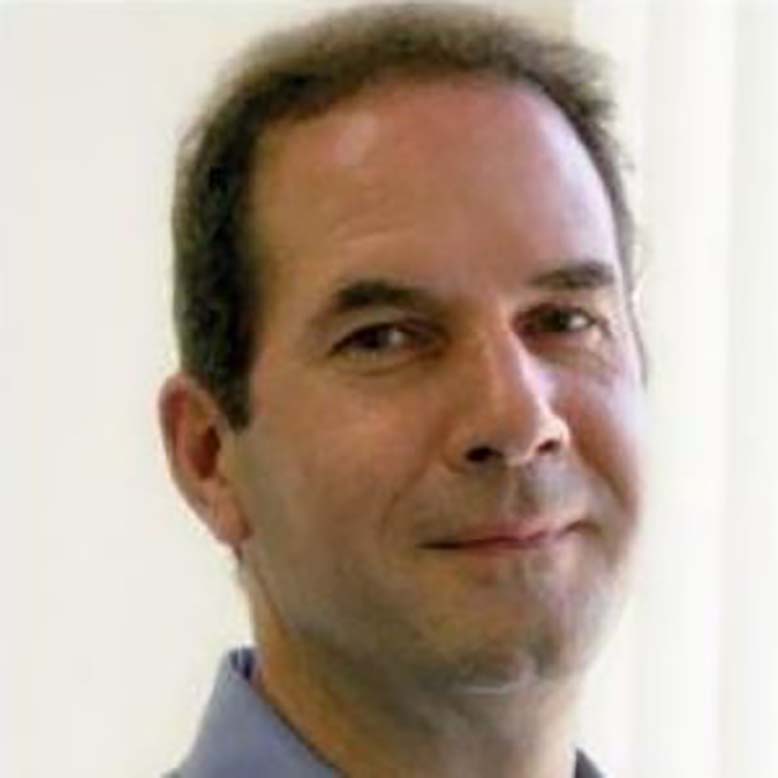
David received an Honours Bachelor of Science Degree in Molecular Biology and Molecular Genetics from the University of Toronto, CANADA. He then completed his Doctor of Chiropractic at the Canadian Memorial Chiropractic College in Toronto, Ontario in 1992 and Diploma in Acupuncture and TCM from the Institute of TCM (Toronto).... Read More
Sanjeev Goel M.D., FCFP (PC) CAFCI
Hi, everyone. I’m Dr. Sanjeev Goel and today you’re gonna be listening to Dr. David Kushnako. David received an honors bachelor of science degree in molecular biology and molecular genetics from the University of Toronto – Canada. He then completed his doctor of chiropractic at the Canadian Memorial Chiropractic College in Toronto in 1992. He was an instructor in microbiology and physical modalities at the Canadian College of Naturopathic Medicine – Toronto as well as anatomy, orthopedics, and pathophysiology at the several private massage therapy colleges. David joined Meditech International in 2011 as the director of education and training where he instructs monthly certification courses, webinars and advanced trainings in photobiomodulation, also known as low level light therapy, and lectures at conferences and post-secondary institutions throughout Canada, USA and around the world. He has presented 2017 North American Association of Laser Therapy in San Diego, California and the 2017 Africa National Chiropractic Congress in Cape Town, South Africa. He also serves as a clinician at Meditech’s Laser Rehabilitation Clinic in Toronto operated by Dr. Fred Kahn. Hi everyone. I’m Dr. Sanjeev Goel and you’re listening to Advanced Anti-Aging and Technology Summit and today I have Dr. David Kunashko who’s a chiropractor in the Toronto area who’s gonna be talking about photobiomodulation. Hi, David, how are you?
David Kunashko, D.C.
Great Sanjeev, how are you?
Sanjeev Goel M.D., FCFP (PC) CAFCI
Good, good. Thank you so much for joining me today. I understand that you work at a clinic outside Toronto and you provide a treatment based on this technology of photobiomodulation.
David Kunashko, D.C.
Right, so I’m a clinician, I’m a chiropractor by profession. I’ve been involved with the technique called photobiomodulation. And as a clinician and chiropractor, we use it for different types of conditions, but it can be used widely from everything from, you know, dermatological issues, neurological issues, wound healing. There’s lots of benefits that the body can can actually get from this. I got interested in the field, I personally had some serious injuries and ended up coming to this clinic and it really helped me recover. And as a clinician, I hadn’t really used it very much.
So when I got here and saw the effects, I ended up working with Dr. Fred Kahn, who’s the CEO of Meditech and he manufactures and distributes medical devices called BioFlex, a laser therapy or light therapy. So I’ve been working with him and the team here for 10 or 11 years now. I’m the director of education and training as well. So I broadcast webinars and do the trainings of other doctors and clinicians, and I also work with the general public because we also offer devices used at home for different types of issues as well.
Sanjeev Goel M.D., FCFP (PC) CAFCI
That’s so interesting. We have a device ourself in our clinic and I know I’ve attended your training about two years ago. So maybe before we even get into photobiomodulation and how you’re using it now at the clinic, if you could take us through like how did you even get into, like get exposed? You said you were a patient. And so how did this treatment have an impact on your condition?
David Kunashko, D.C.
Right, so in my training as a chiropractor, I was sort of made aware of this type of therapy but it wasn’t really widely used. But when I came here, I had some serious issues with my back and injury to my leg, a few other things as well, too. So I wasn’t really sure what to make of it because it’s just light and you don’t really experience or feel a lot during the therapy process, but what you start to feel is an improvement in your symptoms. And that got me really interested. My background is in molecular biology and molecular genetics.
So I started to read the research and I just found it really fascinating, the research on how it actually works in the cells and in the tissues that are trying to heal. And the more I read, the more I realized there was a lot of research out there, a lot of good clinical trials, a lot of evidence to support its use in clinical practice. So then I started to observe the clinic and Dr. Khan’s patients, and I saw remarkable recoveries from everything from traumatic brain injuries and stroke recovery to wound care to dermatological and muscluloskeletal issues like arthritis or what have you. So the more I observed and saw the benefits of it, I decided that it would be something I’d like to use in my clinical practice.
I have experience as an educator. And so Dr. Khan brought me in as an educator as well as a clinician. And that was, like I say, about 10 or 11 years ago. So you know I’ve lectured at conferences throughout the world in South Africa and the United States on this topic of photobiomodulation. It’s becoming a lot more mainstream now. It’s really not a pseudoscience anymore. It never was, but now it’s reached more mainstream. So a lot of people are aware of the benefits of it especially in the cosmetic and the aging type of modalities and clinics. Because if you go to Metis Ball, it’s not uncommon that you’ll see light therapy devices and it works pretty much the same. So a lot of people now are becoming more and more aware of it and the benefits of it.
Sanjeev Goel M.D., FCFP (PC) CAFCI
If you could give us, like give the viewers a little bit of background on the science, like how does it work and what is photobiomodulation?
David Kunashko, D.C.
Yeah, I like to use an analogy of first of all, photosynthesis, which is of course in plants. And we all know that plants grow, they require sunlight, and that sunlight is converted by chlorophyll in a plant into chemical energy, so it’s called photochemical reaction because it uses photons of light and is that energy is conserved and converted into a form of energy that the plant can use to grow. So in cells, in humans and other animals, we have something similar to chlorophyll, it’s called a photoacceptor. The name is called cytochrome or cytochrome C oxidase. And this molecule, this enzyme in mitochondria is what controls energy production in cells. So we breathe oxygen, we eat food which turns into glucose.
That’s called aerobic respiration. And for this to happen, you require this enzyme and other enzymes as well to produce the energy called ATP or adenosine triphosphate. This is critical for cells to recover and to repair themselves and to fight the effects of aging, for example. As we age, these number of mitochondria in the cells, they decline, but this is why you feel, old people often times feel tired all the time or lack of energy is because of the number of mitochondria become depleted and less efficient.
So there’s a whole science to understanding mitochondria and ways to boost the energy production of cells. And this is one way, and basically how it works is there’s certain wavelengths of light, red in particular and near infrared, which is invisible, is absorbed by this enzyme, this cytochrome enzyme in the powerhouse, these mitochondria. And it actually increases the efficiency or the ability to produce this energy, this ATP. So it basically makes your body more efficient using the oxygen and the glucose and it helps to fight inflammation that oftentimes is associated with injuries and the aging process. So the less inflammation in our bodies, whether that’s in our gut or whether that’s in our knee joints or in our brain, the better off we are and the healthier we’ll be. So that in a nutshell is basically how it works.
Sanjeev Goel M.D., FCFP (PC) CAFCI
That’s very interesting. So if we’re, you’re basically saying that sunlight, there’s some spectrums within sunlight are having this impact on these cytochrome enzymes in mitochondria. So does that just mean that being outside is gonna have these healthy benefits, like getting sunlight just from being outside?
David Kunashko, D.C.
Right well there’s a form of therapy called heliotherapy and that uses natural sunlight. And that goes back thousands of years since the dawn of man, really of human kind. And we know that exposure to sunlight is beneficial in many ways, everything from treatment of vitamin D deficiency, like Ricket’s for example, or what have you, to depression and certain skin conditions, those kinds of things. The spectrum of light that achieves that effect is varied. It could be ultraviolet, it could be other wavelengths. But in the case of this type of therapy called photobiomodulation, it’s very specific wavelengths.
So sunlight is made up of a whole bunch of wavelengths, you know, from ultraviolet through the visible spectrum and infrared. And of course, essentially it’s diluted, right? This type of therapy uses either laser diodes or light admitting diodes to use very specific electromagnetic spectrum, like a red and a near infrared. And it’s those specific narrow band wavelengths that trigger this reaction. Other wavelengths don’t really do it for various reasons including your skin can block certain wavelengths like ultraviolet doesn’t penetrate very deep. But it’s just the way they interact with this enzyme in the body that these wavelengths are the ones known to cause this reaction. So in fact, just being on the sunlight, while it’s beneficial, depending on how much dosaging you get, of course, it doesn’t have the same effect because it’s not as concentrated and it doesn’t enter the body like it would when you’re using these types of devices.
Sanjeev Goel M.D., FCFP (PC) CAFCI
Mmhmm. Can one have too much? Like is that possible to have too much treatment of let’s say-
David Kunashko, D.C.
Right, right. Well it’s very much dosage dependent. And by that I mean, it’s like a drug in a way that you have to have enough of a drug, or in this case the light to cause the effect in the body. However, if there’s too little, then there’s really no effect and if there’s too much, it actually doesn’t really benefit you at all. There’s a negative feedback loop that occurs that actually, unfortunately is not very helpful. So when this is being applied, you can’t just grab any red or near infrared light and apply it to yourself. You have to have the correct dosing on the skin and then the correct dosing that enters the body to a certain depth or what have you in order to achieve the benefit.
There’s a window of the dosage. But if there’s too much, it’s not gonna hurt you. It’s just not gonna have a positive effect. So part of what we do here and what Dr. Khan has spent three decades working on is getting these correct dosaging of light. And also there’s ways of entering it into the body, like with pulsing the light or a frequency into the tissues as well. And so he’s worked on these protocols, proprietary protocols that we put into our equipment, knowing that they have, they’re in this dosage range and it can help these different conditions.
Sanjeev Goel M.D., FCFP (PC) CAFCI
So you were mentioning that you have devices at the clinic now that patients can take home. What does that look like? And if you could just maybe give them, what type of conditions would they be taking home for?
David Kunashko, D.C.
Sure. You know Dr. Kahn a lot of patients were coming far away for treatment, and they weren’t able to stay in Toronto for any extended period of time or patients that were just not able to come to the clinic as frequent as possible. So he realized that and so he developed sort of a home version of the professional equipment that we use. And he had been using that for decades. In the last, maybe six or seven years, he developed a new easier to use home system. This system is very much similar to what we use in the clinic, except it doesn’t have a a class 3B laser. Of course, that’s inherently, could be dangerous to the eyes.
We obviously are trained as professionals to use these high powered lasers, but these LEDs that we use in the home devices are much safer and as effective. So they’re little controllers, it’s very easy to use. The pad is placed over the area that you’re you’re treating or what have you. That’s part of my role here is that I support patients that use this equipment through webinars and training webinars so they get familiar with how to use these devices. Usually they’re used maybe two or three times a week, if you’ve seriously hurt yourself, maybe every day. sometimes they’re used just for maintenance or to feel, to help your body overall. And that might be used once a week or twice a week depending, but essentially, you know, it’s usually used 20 minutes to an hour every day for different injuries or what have you.
Sanjeev Goel M.D., FCFP (PC) CAFCI
So you were saying mostly for these are like joint problems and like arthritis perhaps, or injuries. And are people using it for general wellbeing? You were saying that it could give you potentially activating the mitochondria?
David Kunashko, D.C.
Yeah, now the general well being is there’s been a lot of research over the years to show that it has a beneficial effect on the blood, specifically on white blood cells. And white blood cells travel in your circulation and they control inflammation, and they can be triggered to either release pro-inflammatory chemicals that of course cause inflammation or make it prolonged and they can also be triggered to release anti-inflammatory chemicals to help to resolve inflammation or to help to reduce inflammation. And it seems that this photobiomodulation triggers the white blood cells to actually immunomodulate such that it produces more of these anti-inflammatory chemicals and reduce the pro-inflammatory chemicals.
And this has more of a systemic kind of reaction. In other words, it’s a whole body reaction ’cause it’s your blood. So when these white blood cells are triggered in this way, it can actually help overall inflammation in the body. And aging itself is associated with inflammation. So from diet to exercise and there’s other things you can do to reduce inflammation, and this is just another way of doing it in a very safe, effective manner. So how you do that is you target the blood. So you might put it behind your knee where there’s lots of blood vessels, superficial blood vessels, and you would do that just to help with this sort of inflammatory state that our bodies unfortunately gravitate to.
Sanjeev Goel M.D., FCFP (PC) CAFCI
So even if you applied one specific area, it could have a systemic effect is what you’re saying through the blood?
David Kunashko, D.C.
Right and there’s been research to show that by treating just one area, the effect on the blood, of course the blood circulates and it will have an effect throughout your body. Of course, it’s stronger closer you are to where you’re treating, but because the blood circulates, obviously through the heart and then is pumped around, these benefits theoretically could be helped elsewhere. So in general, it’s best to always apply the device where you have the problem. But if you’re looking at sort of the benefits just as a wellness type of thing, then applying it for a little bit longer period of time over large areas of blood supply, then that can have that effect for sure.
Sanjeev Goel M.D., FCFP (PC) CAFCI
And you were mentioning that the clinic had been treating for many years patients with head injuries or concussions, post-concussion syndrome. Do you want to talk a little bit about that? I know people come from all around the world to get those types of treatments.
David Kunashko, D.C.
Right and this goes back to Dr. Khan when he was treating patients coming in with neck injuries due to whiplash or concussions and he started to notice that these patients, you know, part of the symptoms of concussions are cognitive. So, you know, everything from memory loss to brain fog, headaches, and so forth. And he was noticing that when he was treating the neck and the upper cervical spine, the upper neck, that these patients, their cognitive symptoms were improving as well. So that got him interested in treating specifically what they refer to as traumatic brain injuries.
As you mentioned, concussion being the most common, but other things like even stroke recovery or what have you. And so the idea there was when you treat the blood and the spinal cord and the cerebral spinal fluid this all supplies the brain and the central nervous system that these positive effects that I described earlier will have an effect on the central nervous system and to help the injury process occurring in the case of concussion, it’s like a bruising of the brain and neurons are injured, they don’t work properly. And by reducing inflammation, this can help those cells and those tissues to heal as well.
This word caught on to the point where quite a well-known author and psychiatrist, Dr. Norman Doidge, who’s written, many of you might know him, he’s written two books on neuroplasticity, the way the brain changes and heals. And he’s been one of the New York Times best sellers and featured on documentaries and so forth. And it just so happens that some of the patients of Norman Doidge were seeing Dr. Kahn and they ended up talking about these patients and Norman started to send more and more patients with these cognitive issues and eventually Norman wrote about what we do and photobiomodulation and Dr. Khan in his sequel to his first book. And so that obviously raised the awareness of one of the ways that you can help treat and improve neuroplasticity. And neuroplasticity is essentially the ability of the neurons to adapt and to heal themselves. So it’s really by increasing the number of neuronal connections to help with recoveries from concussion and stroke, and even to improve symptoms of neurodegenerative disorders like Alzheimer’s and Parkinson’s. Now this is all experimental work, but we’re seeing very promising results with that.
Sanjeev Goel M.D., FCFP (PC) CAFCI
So for these people who are having a treatment for these head traumas, are they having a red light put right over, like on a cap, or are they just putting it somewhere else in the body?
David Kunashko, D.C.
Yeah we usually start with in the neck and the upper part of the neck. And it’s not uncommon that we can also apply these lighter rays over the what’s called transcranial placement, so over the frontal cortex and the back of the occipital cortex and temporal and parietal lobes as well. And of course this all depends on what the problem is. And every everyone’s obviously taken on a case by case scenario. We’ve also been working with a neurologist in Durban, South Africa, Dr. Ashleigh Bhanjan, who’s been using BioFlex in his clinic, a clinic in his hospital in Durban and treating, along with post-concussion syndrome, all these neurological types of conditions as well with really good results as well.
Sanjeev Goel M.D., FCFP (PC) CAFCI
So what do you, sometimes I go to some conferences and they have these huge panels of red light, like you can almost supposed to go in for full body. Do you think that it’s just more exposure, so probably more benefit? Like, what’s your thoughts about these types of?
David Kunashko, D.C.
The idea is pretty similar. It’s more meant as a general overall well being as opposed to specific treatment. When you’re going for a specific, say an injury or a condition like arthritis or a torn tendon or whatever, then the therapy has to be directed to a certain depth and directed at that area. So that type of equipment wouldn’t make sense to treat those specific conditions, nor would it make sense to treat specific neurological conditions because you can control the dosaging in a specific area or what have you. That would be similar to, as I mentioned earlier, like an overall sort of general well being to treat the body. The differences being, back to the equipment, the light doesn’t touch the skin. So there’s a lot of reflection off the tissue so you have to treat a greater surface area. Our equipment is designed to have what’s referred to as a higher energy density. So we don’t need to treat the entire body, we can treat smaller sections of it with much greater intense light. And because it touches the skin, more of that light will get into the blood and have that effect.
Sanjeev Goel M.D., FCFP (PC) CAFCI
Got it. Where do you think this field is going? Like, what do you anticipate are the next things that are gonna happen in this field of photobiomodulation?
David Kunashko, D.C.
Well some of the research is interesting. There’s been talk of embedded devices. So to treat chronic pain in the spinal cord, to embed light devices that have their own energy source and surgically implanted and this light is emitted and it will reduce the inflammation and help with the pain at that level. So I’ve seen interest in that. I’ve seen work on heart attacks or myocardial infarctions where they’ve treated bone marrow and stem cells away from the heart. Early research was shown in pigs and then they started to do it with humans to show that when this light increases the the number of stem cells and the activity of stem cells. And stem cells are critical for the repair of any damaged tissue, including cardiac muscle tissue that’s injured in a heart attack.
So they’ve shown benefits of treating a patient that’s just had a heart attack with light therapy to reduce the amount of damage that occurs in the heart itself, for example. There’s also been research on treating post COVID patients around the respiratory cage, again, reducing inflammation because we know COVID causes a cytokine storm, which is an inflammatory process. So it makes sense that this therapy might be helpful for that as well. So there’s been case studies and now clinical trials going on to treat that type of disorder as well. You know, it’s now being used a lot more for things like hair loss, because red light, especially, is known to help with growth of hair follicle cells. And of course, in dermatology, to help with the aging effects of skin because it works by stimulating fibroblasts, which are found in skin and they secrete collagen. And of course, collagen is critical for the integrity and what we refer to as sort of, younger looking skin because it helps with the thickness of skin. So those are all some of the areas I’ve seen an increase in research and interest in, for sure.
Sanjeev Goel M.D., FCFP (PC) CAFCI
That’s really, that’s very exciting. Just to think about the hair loss piece, I see there are some devices where people can buy these types of devices, red light devices for their scalp. So is there something that you would suggest? What makes a person a good candidate? Is there some way we know from individual factors or what they can do to make better response to these types of treatments, even any type of photo by any type of condition, even not even hair loss, how do you choose the candidates?
David Kunashko, D.C.
There are differences in genetic makeup. So some people respond better than others. We’re not quite sure why that is. In case of hair growth, if a hair follicle is dead, then it can’t be helpful. It seems to be much more helpful when hair follicles are stagnated or they’re not growing very well or there’s other cases where it’s caused by hormonal changes or stress. So it’s not a genetic type of issue, like male pattern baldness, per se. You see that more common in women. But even in male pattern baldness, they can slow things down and reduce the inflammation and sort of make the hair healthier, for example. But in general, as far as how people react to photobiomodulation, that’s where dosaging comes into play because for example, your skin color’s different than mine.
So the darker one’s skin color is the less likely light will get through it easily. So we have to adjust the dosaging for that factor. And of course body size is a factor, whether you’re very muscular or thin or larger set or smaller set, one, again would have to adjust dosaging. That’s part of the training that clinicians get when they buy or equipment of course is to understand those differences and adjust accordingly. So all of those things need to be taken into consideration as well. And of course there’s a severity, whether it’s chronic or acute, a mild, moderate or severe case of arthritis or what have you. That’s all part of the picture.
Sanjeev Goel M.D., FCFP (PC) CAFCI
Okay where should our viewers go for learning more? If they want to learn more about the BioFlex laser, the in-home unit, where should they go for that?
David Kunashko, D.C.
Right, so they can visit us at our website, bioflexlaser.com. or just Google BioFlex Laser and they’ll be able to find that information as well. There’s lots of free information there, webinars, that kind of thing. I myself broadcast complimentary webinars every month. You can sign up for that. I often times will do very general ones for the general public so they can just understand a little bit more about this type of therapy. And to learn more about other for sure they could do that.
Sanjeev Goel M.D., FCFP (PC) CAFCI
All right, thank you so much for your time today.
David Kunashko, D.C.
You’re very welcome, doctor.
Downloads
